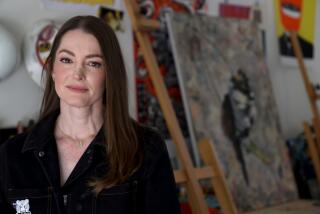Good News and Bad News for the Arts
- Share via
Despite the warnings that Americans are being outworked in Germany and Japan and other Asian countries, there are new figures to suggest that in fact we are working longer and enjoying everything else less.
Whether we are working more efficiently as well as longer is not revealed by the figures. But the statistical rise in the time we spend working is significant. A recent Louis Harris poll, quoted in an article by Joan Libman in the Monday View section, indicates that since 1973 the work week has gone (in rounded numbers) from 41 hours a week to 47 hours a week. Those who run small businesses put in 57 hours a week; professionals work 52 hours.
The increase in work time obviously means a decline in leisure time--and that appears to mean less time for the arts.
The poll, called “Americans and the Arts V,” the fifth biennial survey made by the Harris organization for the Philip Morris Cos., was also discussed in an article in the current issue of the Music Center newsletter. It reveals that leisure time has in fact shrunk from just more than 26 hours a week to just less than 17 hours a week.
This is a whopping 35% decrease in free time, and the arts have been hit hard, along with most other leisure activities. The report says “the arts are holding their own” in comparison with the declines in other leisure-time activities. But the indications are that attendance at the performing arts has been particularly hard hit.
The pollsters questioned 1,500 adult men and women early in 1987. For the first time in 15 years their responses indicated a drop in attendance at arts events: down 12% overall since 1984.
Theatergoing was off 25%, pop and classical concerts were off 36%, opera and musicals 38%. Attendance at dance events was down 14%. On the other hand, museum-going was up 24% and movie attendance 9%.
Lack of leisure time was not the only reason given for the drop-offs in attendance. High ticket prices and the lack of available performances were cited as equally important factors. (That might well help explain the rise in museum-going, a lower-cost activity.)
Active participation in the arts was also down in virtually all areas except photography and dance. Three times as many people as in 1975 said they were involved in picture-taking; seven times as many said they were doing ballet or modern dance.
The good news is that no decline of interest in the arts was reported. The arts were still agreed to be an important ingredient of the good life. It is just, evidently, that something has had to yield, what with the pinch on free time and on the budget.
It is further good news that those questioned said their contributions to the arts had on average gone from $49 annually to $62 since 1984, and most said they might be even more generous if their arms were twisted more efficiently. Some said they would even be willing to pay a $10 federal tax to help fund the arts.
Significantly, more than half (55%) of those polled own VCRs, a threefold increase since 1984, and the families buy or rent an average of 22 cassettes a year. They say they would probably buy or rent cassettes of hit plays and musicals and pop and symphony concerts if they were widely available.
(It is only a footnote to the larger implications of the study, but the survey does reconfirm the seeming paradox that the proliferation of the VCR, instead of diminishing the moviegoing audience as it might have been expected to do, has actually increased it. The cassettes appear to prove that movies are very entertaining, but also that there is nothing like seeing them on the big screen, the way God intended.)
The sampling was fairly large and detailed as life style inquiries go. But the shifting relation between work time and free time needs more exploration into all of its meanings for the society.
Some sociologists believe the increase in work time is by no means entirely positive (the Protestant work ethic revived, after years of slumber). It may be negative: a dangerous workaholism among those who won’t or can’t pause to sniff the roses or participate in family life.
The decline in attendance for the performing arts is worrying, too. The arts need audiences, for moral as well as financial support and for their challenges to the creators.
The trouble is that in the postwar years support of the arts became fashionable. One man’s passion was another man’s status symbol. The protestations in favor of the arts reported by Harris appear heartfelt, not mere lip service, and you have to hope so. Indeed those questioned favored more arts appreciation in the schools, where it has been shamefully neglected.
There still seem to be empty seats in the halls, but nobody said the life of art is easy.
More to Read
The biggest entertainment stories
Get our big stories about Hollywood, film, television, music, arts, culture and more right in your inbox as soon as they publish.
You may occasionally receive promotional content from the Los Angeles Times.










